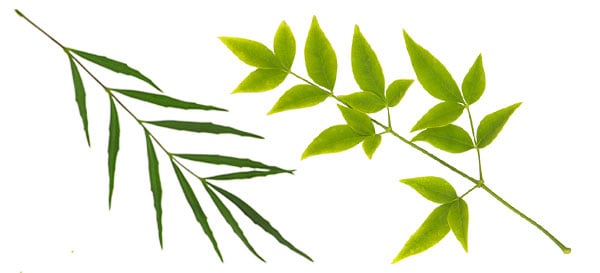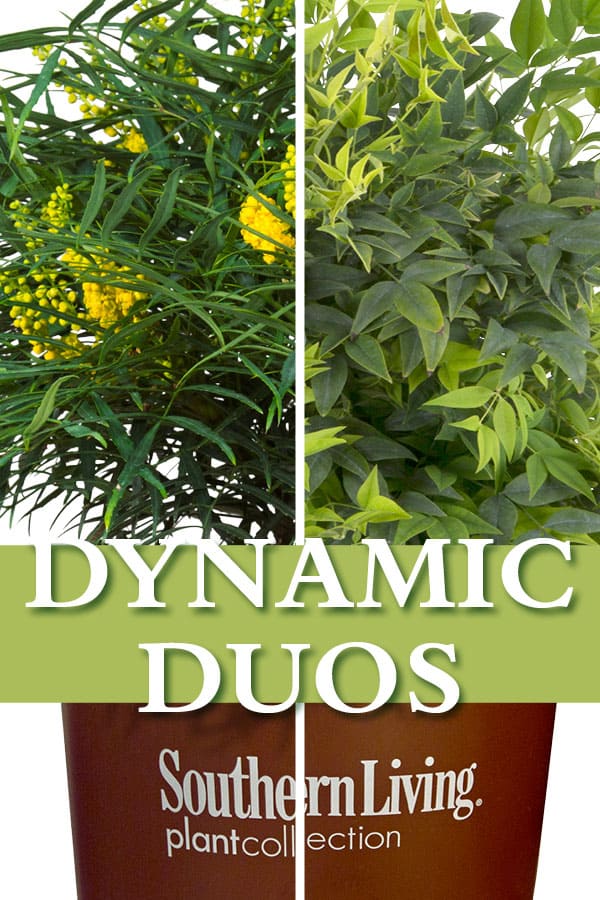Have you ever visited a garden and been captivated by the dynamic plant combinations? Some plants are simply meant to grow together. Take, for example, the classic pairing of roses and clematis. Together they have more impact than when planted alone. The same is true of a hydrangea under-planted with ferns.
What makes certain plant pairings so magical? The secret is balance. Let’s look at ‘Soft Caress’ Mahonia and ‘Lemon Lime’ Nandina to learn how to combine contrasting and harmonizing plant characteristics to stunning effect in the shade garden.
Contrast
Differences in color, texture, shape and size create interest in a planting. Too much contrast leaves a planting feeling unsettled and tense, while too little produces a boring design. For effortless plant pairing, look for companions that differ in just one or two traits, but harmonize in others. ‘Soft Caress’ Mahonia and ‘Lemon Lime’ Nandina share many characteristics. These two evergreen shrubs bring lush color to the garden and are of similar size and growth habit. Differences between the two plants include foliage texture and color.
Color
As distance grows between hues on a color wheel, contrast increases. Therefore, colors opposite one another, such as blue and orange or purple and yellow, provide the greatest contrast. These are called complementary colors. Colors adjacent on the color wheel are called analogous and provide the least contrast.
The deep green foliage of ‘Soft Caress’ Mahonia lies fairly close on the color wheel to the yellow-green color of ‘Lemon Lime’ Nandina, yet the colors still provide a nice contrast in the garden. In this case, the combination of warm and cool tones heightens their difference in hue. The contrast is further sharpened by the value or brightness of each color, with the deep green ‘Soft Caress’ Mahonia appearing as a dark shade, while ‘Lemon Lime’ Nandina is viewed as a bright tint. Together, they contrast, yet originate from the same color family.
Texture

While both ‘Soft Caress’ Mahonia and ‘Lemon Lime’ Nandina have relatively fine-textured foliage, the two plants differ in leaf shape and size. The blades of ‘Soft Caress’ are long and narrow, while ‘Lemon Lime’ sports more oblong leaflets. These subtle differences create variation – just enough contrast to keep the planting from becoming monotonous, but not enough to disrupt its simple elegance.
Putting it Together
Contrast may be used to set the tone of a garden or draw attention to featured elements. Focal points are designed using high contrast. Combining plants or objects with highly contrasting elements creates visual tension that draws the eye. But, too many points of interest and your eye cannot settle. This is where low-contrast plant pairings come into play – they stabilize the more energetic, high-contrast elements providing a place for the eye to rest. Harmonious pairings like ‘Soft Caress’ Mahonia and ‘Lemon Lime’ Nandina also lend a sense of serenity to the garden. A good design strikes a balance between high-contrast combinations and harmonious pairings to create unity across the entire planting.
Pin it for later!











